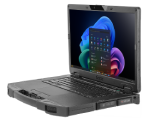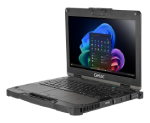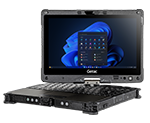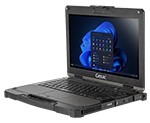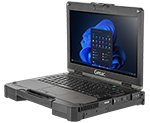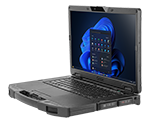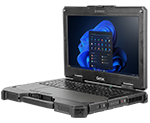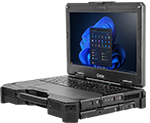Getac Secured-Core PCs
Redefine Cyber Security
Cyberattacks involves computing knowledge and unlawful practices to gain enormous profits from enterprises, especially when the later is running their business on vulnerable systems. As companies rely more and more on modern-day technology, the border of cyber-security needs a better guardian troop.
Targeting the most data-sensitive industries such as government, enterprise PC, and public sector, Microsoft Secured-core PCs are the most secure Windows 10/11 devices out-of-the-box, able to integrate firmware, hardware, software, and identity protection altogether to fight cyber-security threats.


How does a secured-core PC work?
Different from software-only security solutions, secured-core PCs have layers of security built for firmware, hardware, virtualization and identity protection underneath the operating system. At the firmware level, a secured-core PC extends the protection to the firmware, preventing malicious threats of the malware from potentially paralyzing the device. At the hardware level, the hardware root of trust implemented on the CPU makes it possible to start your Windows 10/11 device securely on the trusted platform. Once the CPU is running properly and safely, the operating system then takes over and initiates the communication between the computer hardware, software, and drivers by recognizing a security token. The virtualization-based Hypervisor (or VMM, Virtual Machine Monitor) ensures that all the tokens in the operating system kernel are trustworthy; any unrecognizable drivers are forbidden to access the system memory. Finally, the user identity is checked via Windows Hello during the log-in process, and that identity is saved and protected in the secure VBS environment.
A secured-core PC does all of the above in the background to create the most secured modern PC environment for users.
